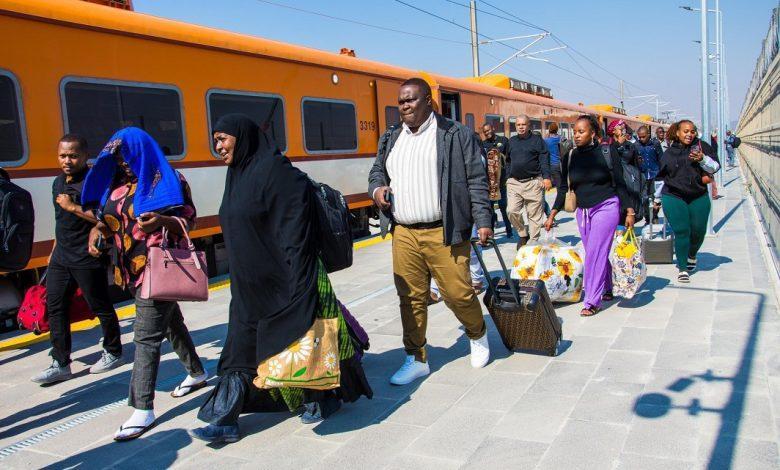Africa-Press – Tanzania. IN DAR ES SALAAM, the standard gauge railway station dazzles with its gleaming sky-blue glass panels, resembling more a luxurious airport terminal than a traditional railway station.
Inside, passengers are greeted by a maze of escalators gracefully gliding through levels that offer a panoramic view of the bustling terminal below.
The station is a marvel of architecture, meticulously designed for passenger comfort, featuring state-of-the-art ticketing counters and plush waiting lounges equipped with charging ports and various amenities.
As passengers settle into their comfortable seats, still enchanted by the station’s beauty, the train smoothly begins its maiden journey to Dodoma, the capital city. The three-hour journey, with a maximum speed of 160 km/h, commenced at 6:00 am on Thursday.
The modern electric train departed with over 900 passengers spread across its 14 carriages. Tanzania Railways Corporation (TRC), Director General, Masanja Kadogosa, noted that demand was high, underscoring the need to increase service frequency.
“We plan to operate four daily trips, two in each direction, and may expand further based on market demands,” Kadogosa stated.
Thursday’s maiden voyage to Dodoma marked a significant milestone in Tanzania’s efforts to modernise its transportation network and stimulate economic growth.
Powered by a sophisticated catenary system (25 kV 50 Hz AC) and equipped with Wi-Fi connectivity, the electric train boasts infrastructure comparable to that of developed nations.
The project is estimated to have cost over 14 billion US dollars, covering rail track construction, electric locomotives, and hundreds of coaches.
The standard gauge railway project is divided into six lots. The first lot from Dar es Salaam to Morogoro, spanning approximately 300 kilometres, is nearly complete, with final touches underway.
Lot 2 extends from Morogoro through Dodoma to Makutupora in Singida Region, nearing 97 per cent completion as of May.
Lot 3 will continue from Makutupora to Tabora, covering 368 kilometres including stations and intersections. Lot 4 extends from Tabora to Isaka in Shinyanga Region, spanning 130 kilometres, with additional intersections. Lot 5 measuring approximately 341 kilometres, runs from Isaka to the city of Mwanza, on the southern shores of Lake Victoria.
The sixth lot, measuring approximately 506 kilometres, runs from Tabora to Kigoma on the eastern shores of Lake Tanganyika.
The standard gauge railway is planned to extend from Isaka to Kigali measuring approximately 371 kilometres, and from Uvinza Tabora off the Tabora–Kigoma line, to the Malagarasi river on the border with Burundi covering 180 kilometres.
On the Burundi side a second section of 187 kilometres will link the border town of Musongati to the capital Gitega. It is later expected to extend to Democratic Republic of Congo.
When fully operational, it will link Tanzania with its neighbours, including Rwanda, Burundi, Uganda and the Democratic Republic of Congo making Tanzania able to utilise its strategic geographical positioning to facilitate cross-border trade and make it a leading regional trade and logistic hub.
The standard gauge electric train is poised to be crucial in enhancing regional trade and connectivity. By efficiently transporting goods between the port of Dar es Salaam and neighbouring cities such as Kigali, Bujumbura, and eventually Goma in the Democratic Republic of Congo (DRC), it lays the groundwork for increased economic cooperation and development.
For More News And Analysis About Tanzania Follow Africa-Press







